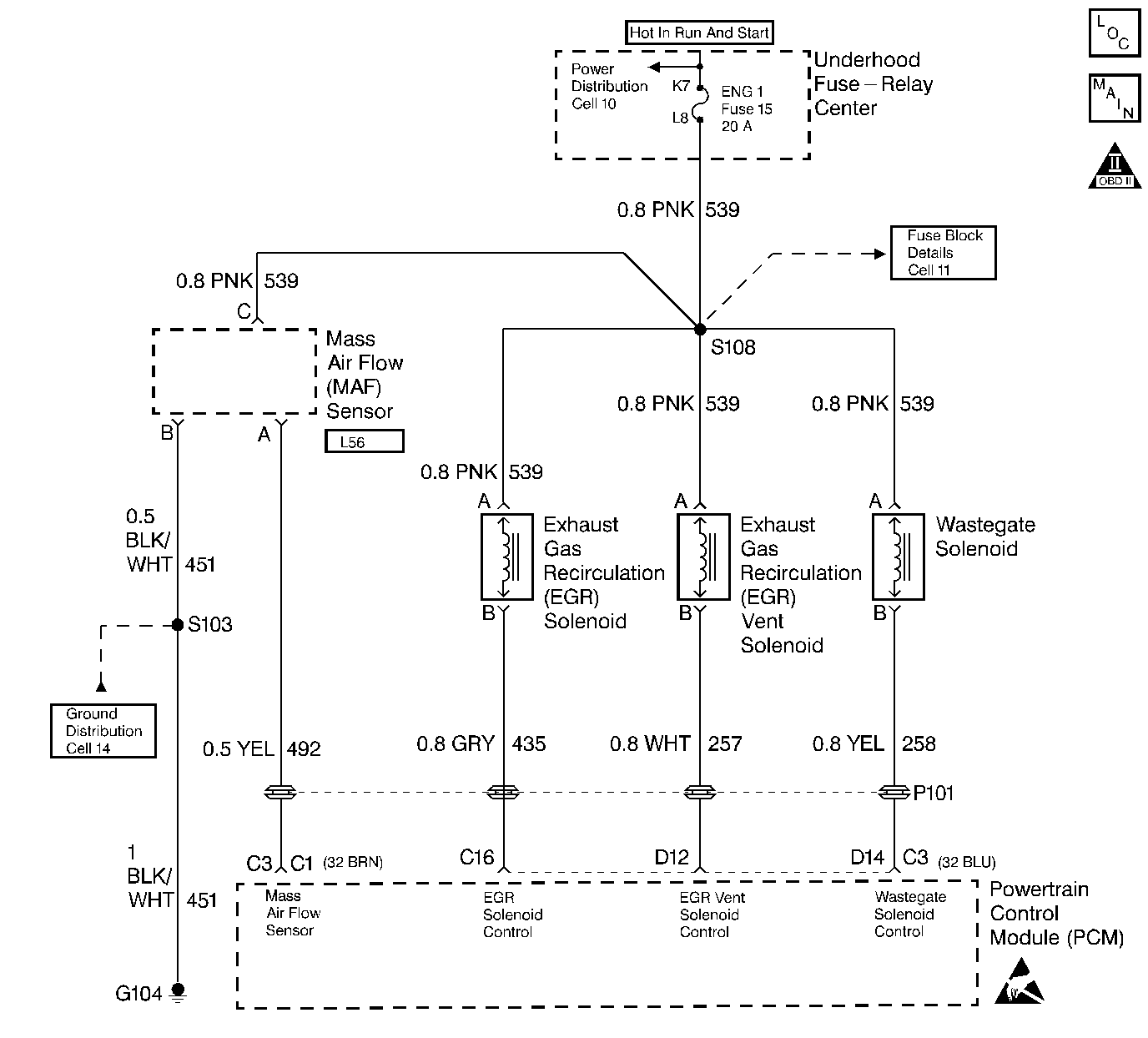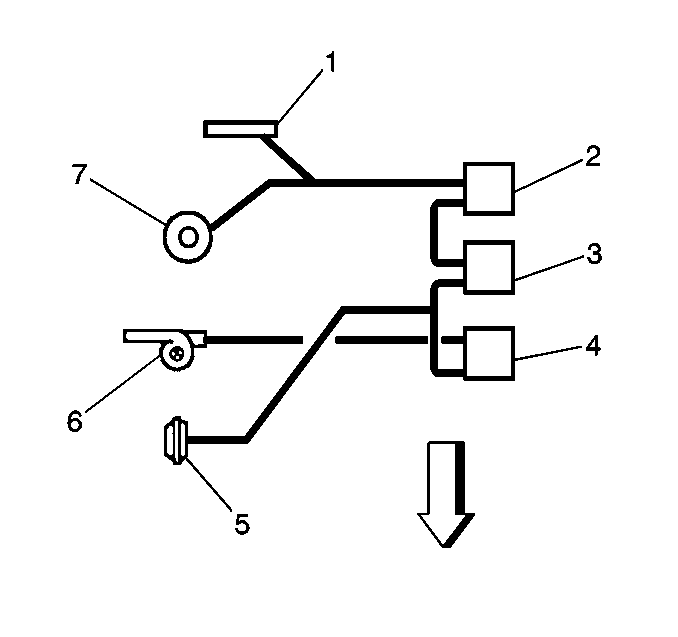
Refer to

Circuit Description
The PCM operates a PWM solenoid to control the EGR valve. This solenoid is normally open. By providing a ground path the PCM energizes the solenoid which then allows vacuum to pass to the EGR valve. During normal operation, the PCM compares its desired MAF signal with the measured MAF signal and makes corrections in the duty cycle accordingly. This is a type B DTC.
Conditions for Setting the DTC
| • | With a 75 kPa Baro or greater, (Idle No EGR MAF) - (Idle Full EGR MAF(commanded by PCM)) is less than .0820 g/cyl |
| • | Lowest achieved EGR pressure at full EGR is less than look up table value (internal to PCM) |
| • | MAF value is greater than or equal to 0.1484 g/cyl. |
Action Taken When the DTC Sets
The PCM will shut down the EGR.
Conditions for Clearing the MIL/DTC
| • | The PCM will turn the MIL off after three consecutive trips without a fault condition. |
| • | A History DTC will clear when forty consecutive warm-up cycles that the diagnostic does not fail (coolant temperature has risen 5°C (40°F) from start up coolant temperature and engine coolant temperature exceeds 71°C (160°F) that same ignition cycle. |
| • | Use of a Scan tool |
Diagnostic Aids
The most likley cause of failure is a restricted vacuum line from the EGR valve to the vacuum tee (including the vacuum tee).
To run the diagnostic test the engine must be at the operating temperature, vehicle in drive at idle for approximately 1 minute, then with the vehicle in park hold engine rpm steady between 1500 and 2100 rpm for 30 seconds. If the diagnostic test fails to run, vehicle must be driven.
The Adaptive Learn Matrix (ALM) is used to adjust the EGR vacuum control based on Mass Air Flow (MAF). The ALM may change as a result of back pressure increases over the life of the vehicle or other engine system variations. The ALM is made up of sixteen cells (numbered from zero to fifteen) in which each cell covers a range of engine speed (RPM) and load (mm3).
Test Description
Number(s) below refer to the step number(s) on the Diagnostic Table.
-
This step checks for the correct amount of vacuum at the EGR valve.
-
At zero vacuum and at 15 in. Hg, there should be a difference greater than 0.10 g/cyl. If the difference is not greater than 0.10 g/cyl the EGR valve is malfunctioning.
Step | Action | Value(s) | Yes | No |
|---|---|---|---|---|
1 |
Important: Before clearing DTC(s) use the scan tool Capture Info to record freeze frame and failure records for reference, as data will be lost when Clear Info function is used. Was the Powertrain On-Board Diagnostic (OBD) System Check performed? | -- | ||
Is the vacuum greater than the specified value? | 15 in. Hg | |||
While applying the vacuum, does Cylinder Air decrease by greater than the specified value? | 0.10 g/cyl | |||
4 | DTC is intermittent. If no additional DTCs are stored, refer to Diagnostic Aids. If additional DTCs were stored refer to those table(s). Are any additional DTCs stored? | -- | Go to the Applicable DTC Table | Go to Diagnostic Aids |
5 | Check the vacuum source at the solenoid assembly. Is vacuum at the specified value? | 15 in. Hg | ||
6 | Repair restricted or leaky vacuum hose (from solenoid assembly to EGR valve). Is action complete? | -- | -- | |
7 | Replace EGR valve. Is action complete? | -- | -- | |
8 | Repair the vacuum pump. Refer to Vacuum Pump diagnosis and repair. Is action complete? | -- | ||
9 |
Important: After repairs, the EGR ALM cells must be reset (under special functions in scan tool). Are EGR ALM cells reset? | -- | -- | |
10 |
Are the repairs complete? | -- | -- | |
11 | Using the scan tool, select Capture Info, Review Info. Are any DTCs displayed that have not been diagnosed? | -- | Go to the Applicable DTC Table | System OK |
